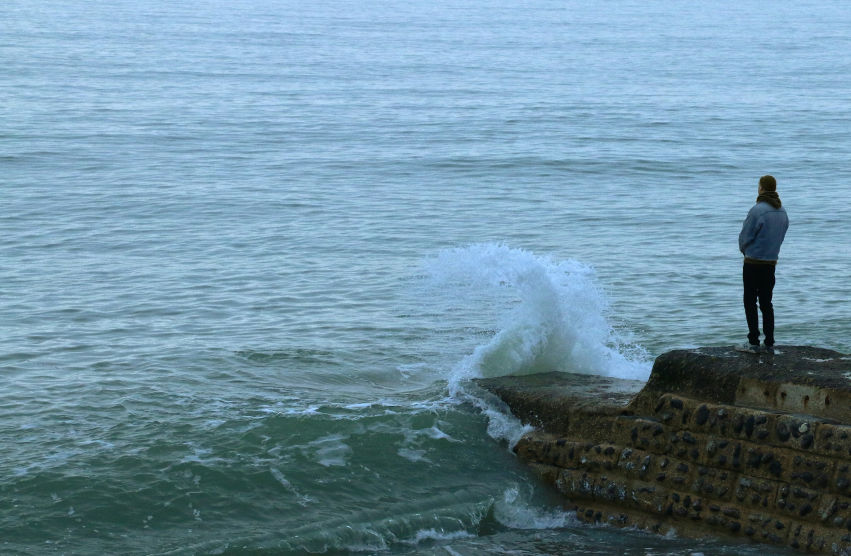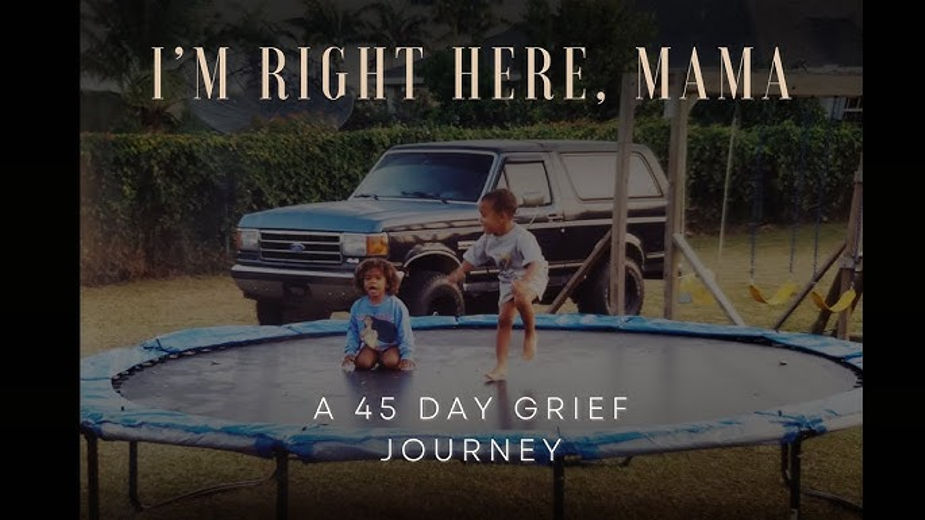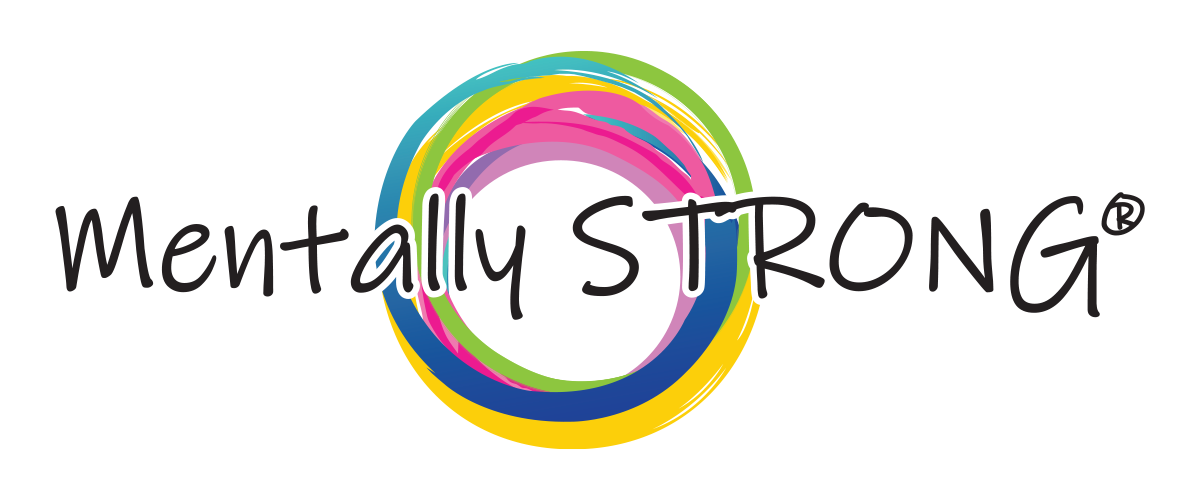If you’re reading this, it’s probably because you’re hurting. Maybe today felt heavier than usual, or maybe grief caught you off guard, like it sometimes does. It’s okay to feel disoriented. Loss changes everything, and no one prepares you for how waves of grief can rise out of nowhere and knock the breath out of you.
I want you to know this: it’s not just you. Grief comes in waves. Sometimes gentle, sometimes fierce, and it’s not a sign that you’re “doing it wrong.” You’re not broken for feeling this way. You’re human, and you’re carrying something incredibly heavy.
Let’s sit with that together for a moment, without trying to fix it or push it away.
The Shipwreck Analogy: Grief Through the Lens of Waves
“As for grief, you’ll find it comes in waves. When the ship is first wrecked, you’re drowning, with wreckage all around you. Everything floating around you reminds you of the beauty and the magnificence of the ship that was, and is no more. And all you can do is float. You find some piece of the wreckage and you hang on for a while. Maybe it’s some physical thing. Maybe it’s a happy memory or a photograph. Maybe it’s a person who is also floating. For a while, all you can do is float. Stay alive.
In the beginning, the waves are 100 feet tall and crash over you without mercy. They come 10 seconds apart and don’t even give you time to catch your breath. All you can do is hang on and float. After a while, maybe weeks, maybe months, you’ll find the waves are still 100 feet tall, but they come further apart. When they come, they still crash all over you and wipe you out. But in between, you can breathe, you can function. You never know what’s going to trigger the grief. It might be a song, a picture, a street intersection, the smell of a cup of coffee. It can be just about anything…and the wave comes crashing. But in between waves, there is life.
Somewhere down the line, and it’s different for everybody, you find that the waves are only 80 feet tall. Or 50 feet tall. And while they still come, they come further apart. You can see them coming. An anniversary, a birthday, or Christmas, or landing at O’Hare. You can see it coming, for the most part, and prepare yourself. And when it washes over you, you know that somehow you will, again, come out the other side. Soaking wet, sputtering, still hanging on to some tiny piece of the wreckage, but you’ll come out.
Take it from an old guy. The waves never stop coming, and somehow you don’t really want them to. But you learn that you’ll survive them. And other waves will come. And you’ll survive them too. If you’re lucky, you’ll have lots of scars from lots of loves. And lots of shipwrecks.”
~Unknown.
What the Analogy Teaches Us About Grief
Grief is messy. There’s no perfect way to get through it, no “right” timeline for healing. The shipwreck analogy reminds us that it’s okay to feel unsteady and exhausted. Surviving loss means to have grace, patience, and learning how to live in this new, unfamiliar ocean.
Some days, you might feel like you’re barely treading water. Other days, you find yourself floating, even if just for a moment. Both are part of the process. The wreckage, the memories, the pain, and the love, stays with you. But slowly, you learn to move through it instead of being swallowed by it.
Recognize Your Wreckage and Learn to Float

Grief has a way of leaving you in pieces. You find yourself standing in the aftermath, staring at the parts of your life that don’t fit together anymore. It can feel impossible to know where to begin.
But here’s what I want you to know: you don’t have to rebuild everything today. Right now, it’s okay to simply find something that helps you stay afloat.
Maybe it’s the way sunlight filters through the window in the morning, or the way your loved one’s favorite song makes you feel connected, even for a moment. Those moments are your life rafts. They remind you that even in the wreckage, you’re still here.
Take it breath by breath. You’ll find your way.
Why the Waves Never Fully Disappear
There’s a hard truth about grief that no one really talks about: that grief comes in waves, and these waves don’t stop. They may soften, come less frequently, or feel more manageable, but they never truly vanish.
You might be fine for weeks, even months, and then out of nowhere, a memory, a smell, or a song hits you, and you’re pulled under again. It’s not because you’re weak. It’s not because you’ve made no progress.
Grief lingers because love does. The deeper you’ve loved, the more those waves remind you of what you’ve lost. But they also remind you of what you had.
Instead of fearing the waves, try to notice what they carry. Sometimes, they’re just reminders of the pain. But sometimes, they carry glimpses of joy, memories that warm your heart, even if they bring tears.
Navigate the Emotional Tides of Grief
Grief, like a wave, shifts and swells, often when you least expect it. You can be fine one moment and feel like you’re drowning the next. That’s the nature of grief’s waves: unpredictable, raw, and deeply human.
When the First Wave Feels Overwhelming
The first wave of grief can feel like a storm crashing over you, leaving you breathless and disoriented. You may find yourself asking, “How am I supposed to survive this?” That question is so normal, so human. In those early moments, survival feels like the only goal.
When the grief feels unbearable, focus on one small thing you can do to anchor yourself. It might be as simple as breathing deeply, calling someone who understands, or letting yourself cry without apology. These small actions won’t take the pain away, but they can remind you that you’re still here, still holding on, even when it feels impossible.
How Triggers Bring Unexpected Waves of Pain
Grief triggers can feel like emotional ambushes. A song, a familiar scent, or even an ordinary place can stir up a tidal wave of memories and emotion. It can feel unfair, like you’ve been blindsided just when you thought you were steady.
These moments are reminders of your deep capacity to love. Instead of fighting the wave, try to observe it. Acknowledge what has surfaced, and give yourself permission to feel whatever comes. Some waves will be gentle; others will crash hard. But each one is part of the process, not a sign that you’re back at the beginning.
Build Confidence to Weather the Storm
Since grief comes in waves, with time, you may find that you start to recognize when these grief waves will rise and fall. That recognition can become a form of strength. You’ve been through this before, and each time, you’ve made it back to shore.
One way to build confidence is to create grounding rituals that remind you of your resilience. Maybe it’s lighting a candle for your loved one, taking a walk in nature, or sitting quietly with a meaningful memento. These moments can serve as reminders that you’ve weathered the storm before, and you can do it again.
Controlled Grief: Find Balance in the Waves
Grief pulls you under just when you start to catch your breath. I know this firsthand through my own story of losing 3 children and my husband. After Johnny’s passing, I tried to stay afloat by avoiding my emotions entirely. But avoidance only made the grief waves stronger. Over time, I realized there’s a way to honor your pain without letting it overwhelm every part of your life. This is where controlled grief became a lifeline for me: a practice of intentionally creating space to feel my emotions fully while still finding a way to move forward.
If you’d like to know more about me and my professional and personal experiences with grief, click here.
Allow Yourself to Embrace the Pain With Compassion
Many people fear leaning into their grief because they’re afraid they won’t come back up for air. I remember that fear vividly. After Reggie’s passing, there were days when I thought, If I let this grief in, it will break me completely. But I learned that sometimes, the only way through is to let yourself feel it. Controlled grief gives you the permission to sit with the pain in an intentional, structured way.
For me, it meant holding Reggie’s sweatshirt, looking at photos, and allowing myself to feel everything in a protected space of time. Maybe for you, it’s setting aside time each morning to sit with your feelings or journaling about your memories. You say, “Right now, I’m holding this grief,” while knowing that life still holds moments of joy, too.
Find Steady Anchors: Grounding Techniques That Help
When the waves of grief feel too intense, grounding yourself can help bring you back to the present. After Miah’s sudden passing, I felt like I was completely untethered. The simplest tasks felt impossible. But grounding techniques became a way to remind myself that I was still here.
Anchors can be anything that reconnects you to your body and surroundings. For me, placing my feet on the floor and breathing deeply helped me feel the earth beneath me.
Some people find grounding through movement, like yoga or walking, while others prefer stillness and reflection. What matters is finding what feels steady for you. When the ocean of grief pulls you under, these anchors can help you find your way back to the surface.
The Importance of Honoring Grief to Heal
Grief comes in waves, and these waves don’t ask for permission: they just show up. After losing my husband, I learned that trying to push this grief away only delayed the inevitable. Honoring your grief means accepting that your love for the person you’ve lost is still alive.
One meaningful way to honor your grief is by creating rituals that feel personal and sacred. I hold space for Reggie on the anniversary of his passing by wearing his sweatshirt, laying in bed, and giving myself a full day to feel everything. I’ve also found comfort in lighting candles and speaking their names out loud.
Whatever ritual feels right for you, know that honoring your grief isn’t weakness. It’s a courageous act of remembering while still finding ways to live.
Grow After the Storm: Build a Life Around Your Grief

Grief can never go away, simply because it is love with nowhere to go. After losing my son Johnny to a drowning accident, I felt like I was drowning, too. I still remember the long drive back from the river, holding onto the unbearable truth that I would have to tell his sisters that he was gone. They had already lost so much before they came into our family, and I had promised them that they were finally safe. That promise felt shattered in my hands.
Years later, when my youngest son Reggie was diagnosed with DRPLA, a terminal neurodegenerative condition, I went into battle mode. I researched, prayed, and did everything in my power to slow the disease. But on October 30, 2016, I held his hand as he took his last breath. The guilt of that day still visits me, whispering, Why didn’t you take him to the hospital sooner? Even now, I have to work on forgiving myself for things I couldn’t control.
And then there was Miah. She also had DRPLA, but her death came suddenly, unexpected and quiet. She went to sleep and never woke up. I thought I knew grief, but losing Miah taught me how unpredictable it can be. I wasn’t ready, and it broke me in ways I hadn’t imagined.
Accept That the Ocean of Grief Is Always There
Grief has taught me that the waves never stop, they just change. Some days, the water is calm, almost comforting. Other days, the grief waves knock me down before I even see them coming. But I’ve learned that resisting the waves only pulls me deeper. Instead, I’ve found ways to float. I allow myself time to grieve, to sit with the memories, wear Reggie’s sweatshirt, or hold onto Johnny’s picture and let the tears come. Controlled grief gives me space to feel the pain without being consumed by it. And when I’ve cried all I can, I choose to get up, not because the grief is gone, but because I’ve given it its place.
Find Beauty in the Scars of Loss
The truth is, you don’t come out of grief the same person. And that’s okay. I’m not the same woman I was before I lost Johnny, Reggie, or Miah. But I’ve learned to see the strength in the scars they’ve left behind. Those scars remind me of the love we shared and the resilience I’ve built because of that love. They don’t erase the ache, but they remind me that I’m still here, still capable of finding joy and purpose, even after everything I’ve lost.
Learn to Swim: Strength Through Love and Resilience
If you’ve lost someone dear to you, I want you to hear this: you’re not supposed to “move on.” You’re allowed to feel broken, but you’re also allowed to build something beautiful out of those broken pieces. Grieving is a lifelong process, but it doesn’t mean you can’t live a meaningful life alongside it. I’ve chosen to honor my children by continuing to live, love, and help others heal.
The Mentally STRONG Method has been a lifeline for me. A way to organize the overwhelming emotions, make sense of what I’m carrying, and remind myself that I can still make intentional choices. It’s how I’ve learned to navigate life after loss, and it’s how I’ve helped others do the same.
Grief will always come in waves. But with time, love, and support, you can learn to float through the storm.
Resources to Help You Through the Waves of Grief
Grief is a painful and isolating journey, but I’m here to remind you that you do not have to go through these waves of grief alone. Here are some resources to help you through the pain:
Professional Support
Therapy can be an anchor when grief feels too heavy to bear alone. After losing my children, I leaned on trusted professionals who helped me process the unbearable pain and untangle the complicated emotions of guilt, anger, and despair. Sometimes, we need someone who can hold space for us while we work through the storm. If you’re feeling overwhelmed, seeking professional support can be an act of strength and self-preservation.
Free YouTube Playlist on Grief
If you’re not ready to seek therapy but need words of comfort and understanding, I’ve created a grief playlist on Youtube where I share my story and the strategies that have helped me. These videos are meant to feel like a conversation—a place where you can feel seen, heard, and supported. You’re welcome to take what resonates and come back whenever you need it.
Free Grief Course
For those seeking structure and a step-by-step approach, our free grief course, Grieve with Purpose offers guidance rooted in compassion and actionable steps. With resources like grief worksheets, it’s designed to help you process your grief on your terms, at your pace, because no two journeys are the same.
Grief Documentary

If you’re seeking a deeper connection, I encourage you to watch my documentary, I’m Right Here, Mama. It offers an intimate look into my personal journey through grief, reflecting on the pain, the struggles, and the steps I’ve taken toward healing. Through sharing this story, my hope is that you’ll feel a sense of comfort and inspiration, knowing that even in the darkest moments of loss, there is still room for healing and growth.
Grief Intensive
If your grief feels like a weight you can’t carry alone, and you’re seeking a deeper way to work through it, I invite you to join the Grief Intensive. This supportive and restorative grief retreat is thoughtfully designed to help you distinguish grief from trauma and uncover meaningful steps toward healing. With compassionate guidance, practical tools, and the strength of a nurturing community, it offers a safe space to face your grief with courage and discover moments of peace and purpose along the way.
Learning to Live with the Waves
Grief waves may always ebb and flow, but over time, you can learn to navigate its tides with more steadiness. You may still have days where you feel like you’re back at square one, and that’s okay. Healing isn’t linear. But as you continue to show up for yourself and lean on the right tools and support, you’ll notice moments where the grief waves feel a little gentler, and your footing feels stronger. Your journey is yours alone, but you don’t have to face it alone. If you’re ready to take that next step toward healing, know that spaces like the Grief Intensive are here to help you make sense of what you’re carrying.

